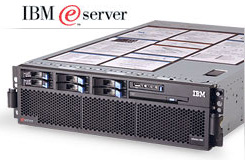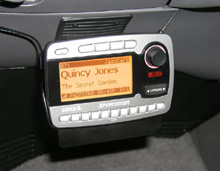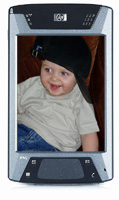Right now I’m doing research in uncharted territory at work. We have an SQL application performance problem we’ve decided to attack with hardware following months of performance analysis. I have reached a point where benchmarks are unavailable. This is because the server options we have on the table vary in platform architecture, therfore few performance comparisons. In the ring are:
The IBM xSeries 445 8-processor, Intel, single core server with dual fiber channel host bus adapters for redundant connections to SAN controllers and…
Servers from Sun and HP (v40z and HP585 respectively) that are 4-processor dual core solutions with dual FC HBA’s
So the question is: Can the new AMD Opteron dual core systems out perform the 8-processor dual bus system from IBM?
I’ve heard “yes” and “no” but no one has put these 8-way solutions up against each other in any performance comparisons that I can find. I’d really like to see it done by TPC.org since my solution needs to be transaction based. Therefore I’m tempted to go with the dual core solution because that is the trend of the industry with Intel currently having 15 dual core projects in the works. I will be spending the rest of this week and the first part of next week on the phone with IBM, HP and Sun engineers looking into specifics surrounding the architectures.
At present I have deduced that the AMD dual core Opterons do out perform the Intel Smithfield based dual core solution. This is because the Intel platform cannot distinguish ownership of cache data between the two cores. The AMD Opteron can actually pass memory data between the cores. But because the AMD chipset can only recognize DDR memory (not DDR2) AMD is having to go back to the drawing board for the base architecture in order to stay ahead of Intel in the future. For now, AMD has once again smoked Intel just like they did with the Athlon 64 vs. the Itanium.
During my research I contacted a relatively unknown server manufacturer who will be bringing an 8-processor AMD 875 solution to market within the next few weeks. Verari uses iWill motherboards and is trying to stablize the cooling issues now before the product launch. They don’t have the brand name but they may soon offer the best of both worlds with 16 total cores in 8 sockets.

 IBM! For five weeks I’ve been drilling through performance specifications for eight way x86 servers to replace Dillon Supply’s HP DL580 four way Win2K SQL server. Through this I’ve learned the
IBM! For five weeks I’ve been drilling through performance specifications for eight way x86 servers to replace Dillon Supply’s HP DL580 four way Win2K SQL server. Through this I’ve learned the 

 This week I learned all about installing Microsoft SQL CE Tools version 2.0 the hard way. I hope this entry makes it easier for someone browsing the Internet for information on this topic since there is very little out there. SQL CE Tools allow for web based communication from a PDA to a Microsoft SQL 2000 database.
This week I learned all about installing Microsoft SQL CE Tools version 2.0 the hard way. I hope this entry makes it easier for someone browsing the Internet for information on this topic since there is very little out there. SQL CE Tools allow for web based communication from a PDA to a Microsoft SQL 2000 database.